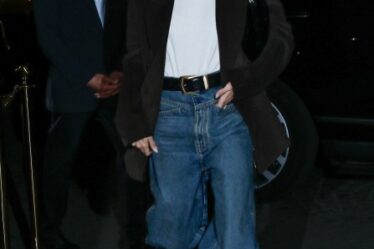
Everything You Need to Know About Sustainable Fashion
There’s so much confusion about sustainable fashion that a comprehensive guide on the matter is paramount.
In this article, you’ll learn what sustainable fashion is (best definitions) and five reasons to why it is so important.
We’ll also review some of the most important facts about sustainability in fashion and detail on what is considered greenwashing in fashion and how to deal with it.
You’ll learn what makes a fashion brand “sustainable”, and what are the eight best sustainable fashion examples, such as ethical fashion, eco-friendly fashion, vegan, slow, conscious, and so on.
Finally, we’ll explore the top 10 sustainable fashion brands of 2023.
IN THIS ARTICLE
Sustainable Fashion Guide
Why is Sustainable Fashion Important?
Best Sustainable Fashion Brands
What Can We Do for Sustainable Fashion?
What Is Sustainable Fashion – Best Definitions
According to several sustainable fashion experts, this is the most accepted definition to date:
Sustainable fashion is an all-inclusive term describing products, processes, activities, and actors (policymakers, brands, consumers) aiming to achieve a carbon-neutral fashion industry, built on equality, social justice, animal welfare, and ecological integrity.
According to Wikipedia, the definition of sustainable fashion (also defined as Eco-fashion and Re-fashion) is:
… a movement and process fostering changeS to products and the fashion system, pushing towards greater ecological integrity and social justice. Sustainable fashion concerns more than just addressing fashion textiles or products.
According to a study in the Journal of Fashion Marketing and Management, sustainable fashion is comprised of:
… local sourcing and production, transparency across the supply chain, traceability of work processes and raw materials, environmentally friendly raw materials, safe working conditions, and fair wages.
Why Is Sustainable Fashion Important?
One of the most asked questions is, does the world need sustainable fashion?
It does, without a doubt, and here are the top 5 reasons:
1. Sustainable Fashion Creates Less Waste
Globally, one garbage truck of textile waste is dumped at a landfill or burnt every second.
This enormous waste is created by fast fashion companies that launch weekly fashion trends and fulfill them with poor-quality low-priced products.
In comparison, sustainable brands focus on quality clothing products from long-lasting materials.
Moreover, sustainable fashion brands rarely follow fast fashion trends.
2. Sustainable Fashion Ensures Fair Wages & Proper Working Conditions
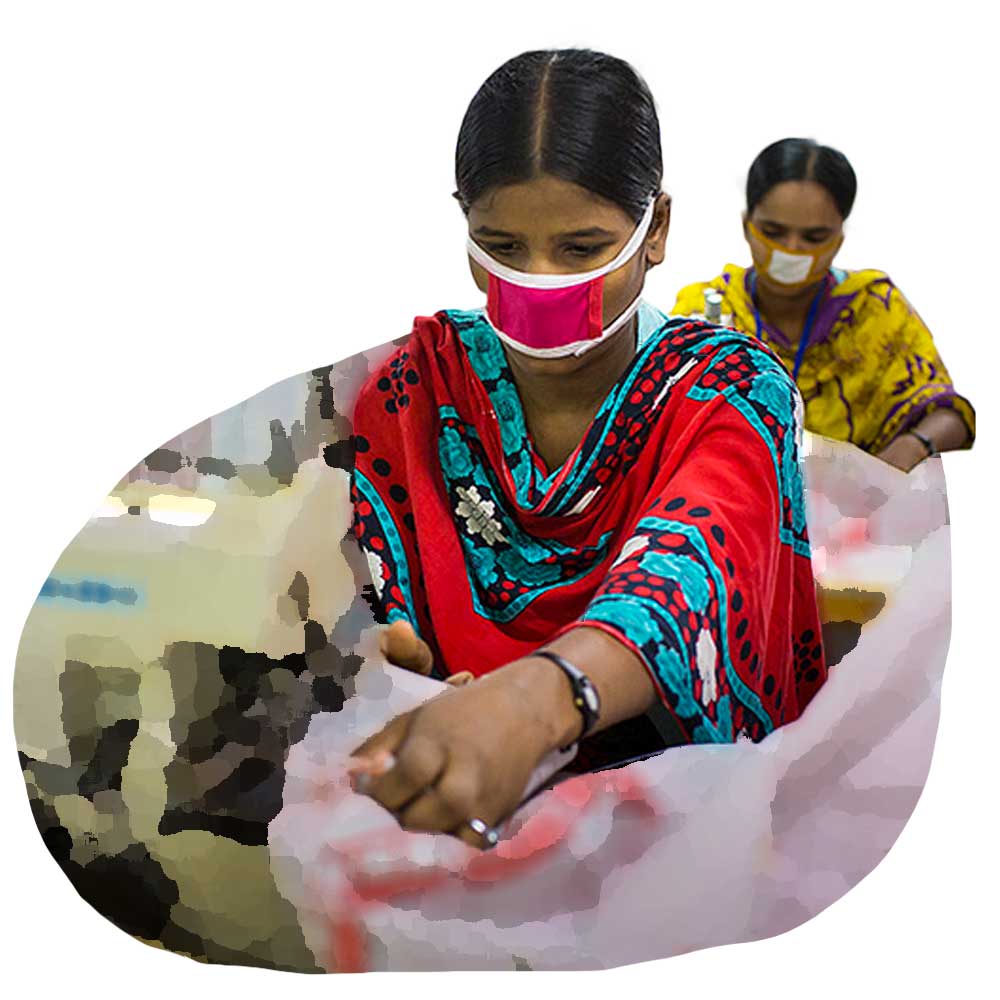
Cheap fast fashion garments are made possible by harsh working conditions for garment workers.
Most fast fashion brands produce garments in developing countries where workers are paid less than a living wage.
Poor safety and health conditions, long working hours, and the constant pressure to produce all create an environment of worker exploitation.
Frequent child labor accusations have also been brought against fast fashion brands.
On the other hand, sustainable clothing brands prioritize fair wages and safe working conditions for all employees.
3. Sustainable Fashion Reduces CO2 & Other Greenhouse Gases Emission

Fast fashion has a huge carbon footprint from material creation, manufacturing, transportation, and even textile waste decomposing in landfills.
For example, most fast fashion clothes are made from petroleum-based materials.
Think acrylic, nylon, and polyester; production and disposal require a significant amount of energy.
On the other hand, sustainable fashion utilizes biodegradable materials from natural or recycled fabrics.
These materials require little to no chemical treatment, less energy, less water, and no pesticides or fertilizers to grow.
4. Sustainable Fashion Saves Water

The fashion industry is one of the largest water consumers in the world right now.
The water is consumed not only for washing garments but also during manufacturing, in dyeing, and finishing processes.
Just to put that into perspective, it takes about 2,720 liters of water to make one cotton shirt and a whopping 7,000 liters to make one pair of jeans!
On top of consuming water, clothing production impacts the environment by polluting freshwater with toxic chemicals that find their way into waterways.
In comparison, most sustainable fashion brands have “water on budget” policies that limit water usage during clothing production.
Moreover, sustainable fashion prioritizes organic textiles made from linen, hemp, and organic cotton, which require little to no water during production.
5. Sustainable Fashion Saves Animal Lives
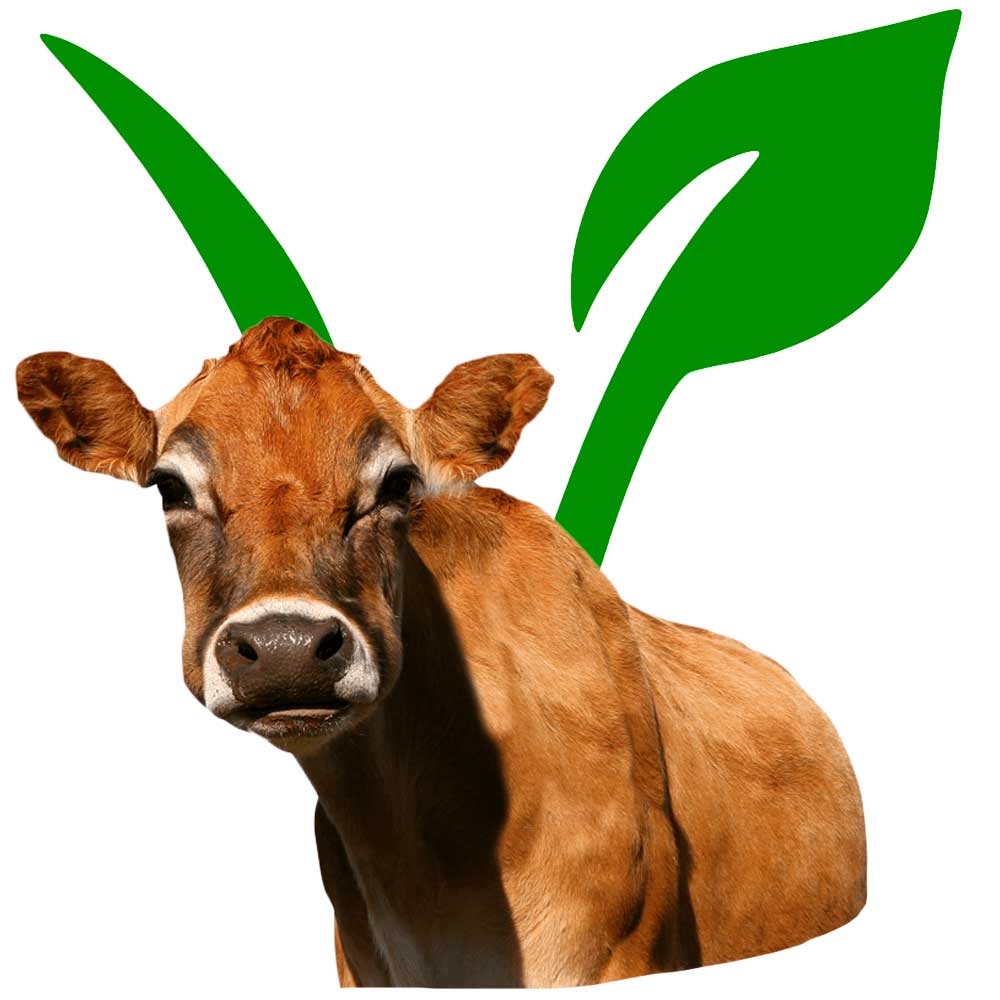
Animals are vital to our ecosystem, each playing a key role in ensuring Earth is habitable.
As such, any threat to wildlife and other animals’ safety should concern us all.
Leather bags, shoes, fur coats, and other goods made from animal leather, feathers, and wool, affect animal populations and, thus, the survival of humanity on this planet.
In comparison, clothing brands that are cruelty-free and vegan protect animals.
These companies use leather and fur alternatives in their products, saving animals from exploitation and death while preserving the ecosystem’s balance.
Top 8 Sustainable Fashion Examples
Sustainable fashion is an all-encapsulating term that can be hard to pin down at times.
The following activities – defined in their own terms – are some of the best examples of sustainable fashion to date.
Each example is an intrinsic part of the overall sustainable fashion aim.
Without further ado, these are the best eight examples of sustainable fashion right now:

- Ethical and Fair-trade Fashion.
- Eco-friendly or ‘Green’ Fashion.
- Vegan and Cruelty-free Fashion.
- Slow Fashion – as in slow manufacturing.
- Upcycled Fashion.
- Thrifting, Swapping, Sharing, Renting Fashion.
- Circular Fashion – reuse of discarded and recycled materials.
- Conscious Fashion – consumers’ role.
1. Ethical and Fair-trade Fashion
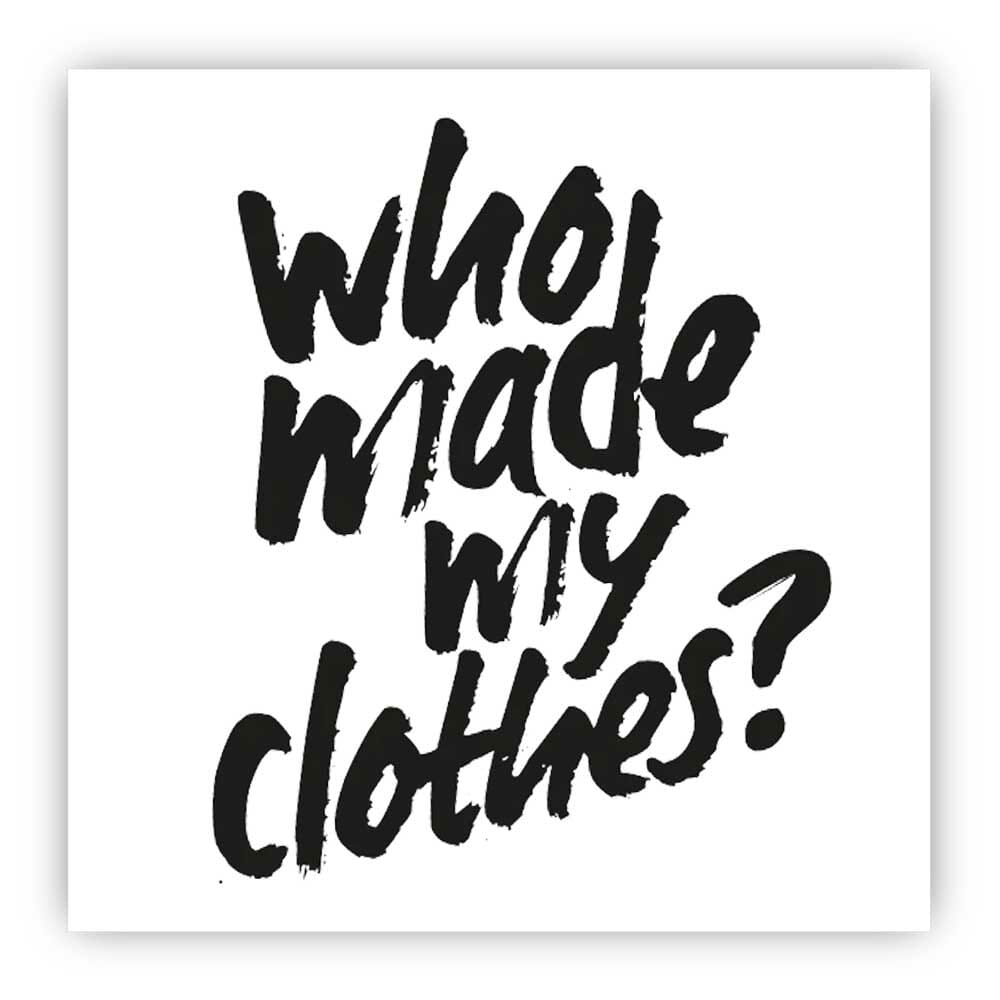
Ethical and Fair-trade are two great examples of sustainable fashion.
Ethical and Fair-trade activities (in the realm of fashion) are related to the welfare of people working in the industry.
That is child labor, gender rights, safe working conditions, fair-trade manufacturing, and all other social justice aspects.
Both Ethical Fashion and Fair-trade Fashion can be further detailed based on the activities conducted.
Ethical Fashion companies, activists, and brands deal with people and their welfare, be that mental or physical.
On the other hand, Fair-trade organizations and brands ensure the creation and maintenance of supply chains where farmers, and manufacturers, get a fair share of the cut in exchange for their products.
Together, both terms cover the socio-economic aspects of the fashion industry.
As such, all actors involved in these actions are seeking ways to improve working conditions, wages, and fair trade practices.
2. Eco-friendly and Green Fashion
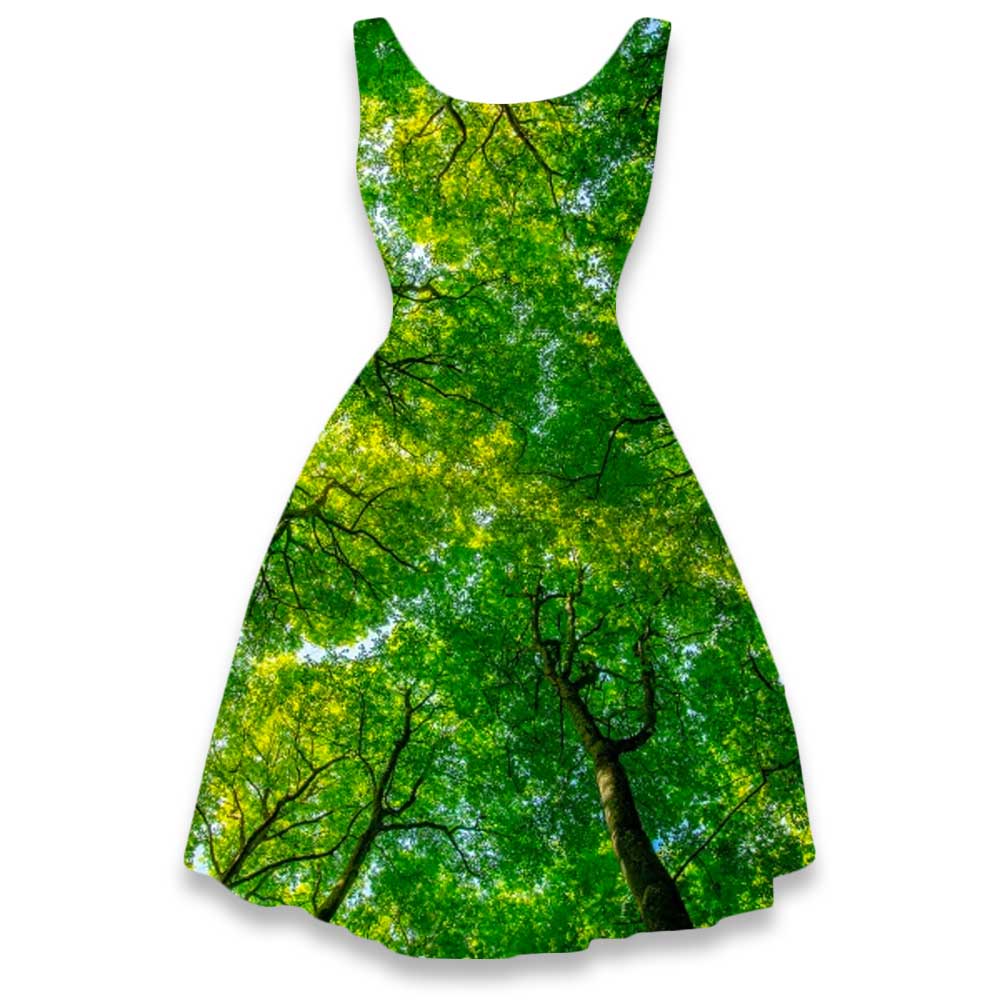
Both terms are used in relation to environmental problems caused by the fashion industry.
Think waste creation, water and soil pollution, and reckless use of resources that are accelerating the global climate crisis.
To date, over 90% of clothing brands continue to use plastics and other non-biodegradable fibers that cause environmental damage at scale.
For example, every year, over 70 million barrels of oil are used to make polyester fibers that eventually end up in oceans, killing animals or people by entering the food chain.
As a solution, green-fashion companies advocate the replacement of plastics with eco-friendly, biodegradable, and natural fibers that feed the environment.
To date, results are positive as the number of companies using eco-friendly and green materials, such as organic cotton, hemp, mushroom leather, kelp leather, etc., are on the rise.
3. Vegan and Cruelty-free Fashion
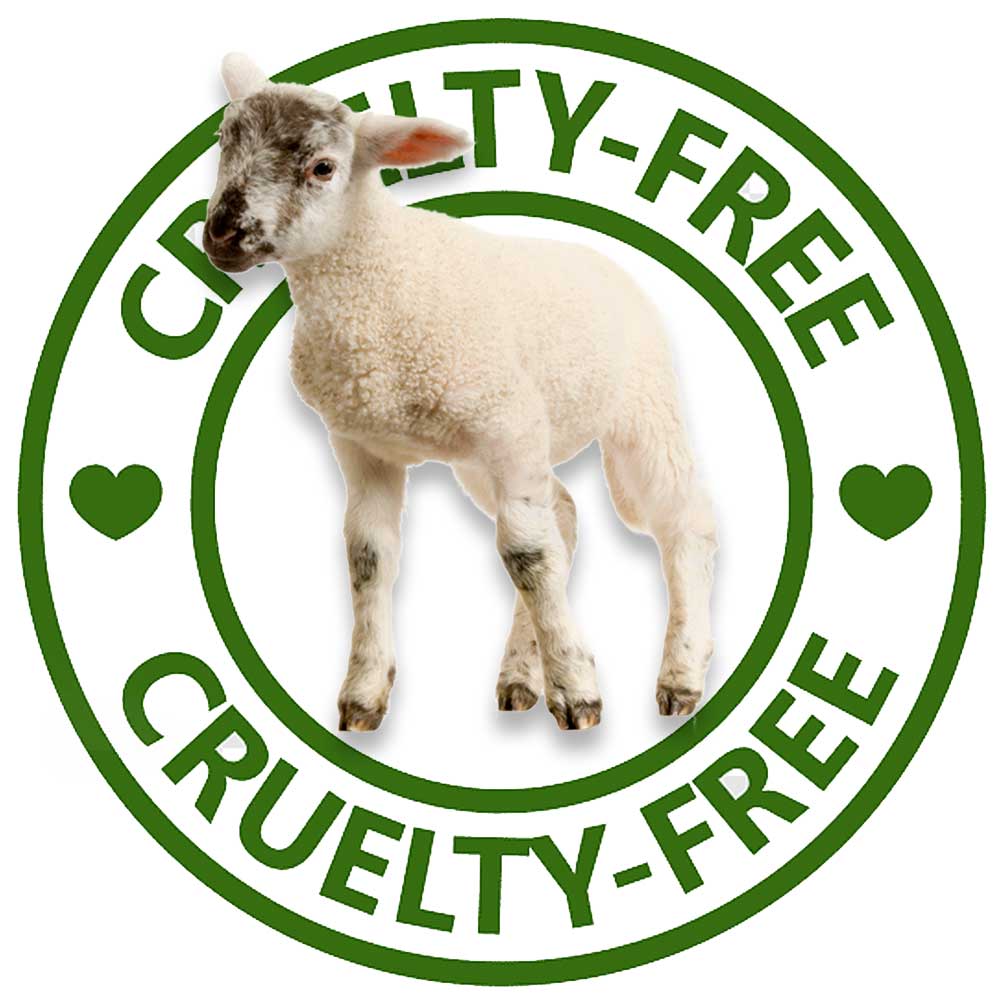
Vegan and Cruelty-free Fashion terms describe products manufactured without using materials of animal origin or obtained without cruel means.
Similarly, all activities undertaken by vegan and cruelty-free fashion campaigners aim to bring to consumer attention industrial animal farming and animal exploitation for fashion.
However, there are arguments that vegan fashion causes more damage than good.
The argument states that most PETA-approved ‘Vegan Fashion Brands’ use PVC and plastic-based alternatives to animal leather, which saves animals from sacrifice but kills them by polluting their environment.
More recently, proponents of the vegan fashion movement insist that for a vegan clothing brand to qualify as a ‘sustainable fashion brand,’ it must also pay attention to its environmental impact.
Most cruelty-free and vegan clothing brands achieve it by using leather alternatives made from plants, fruits, mushrooms, or even in the lab.
4. Slow Fashion
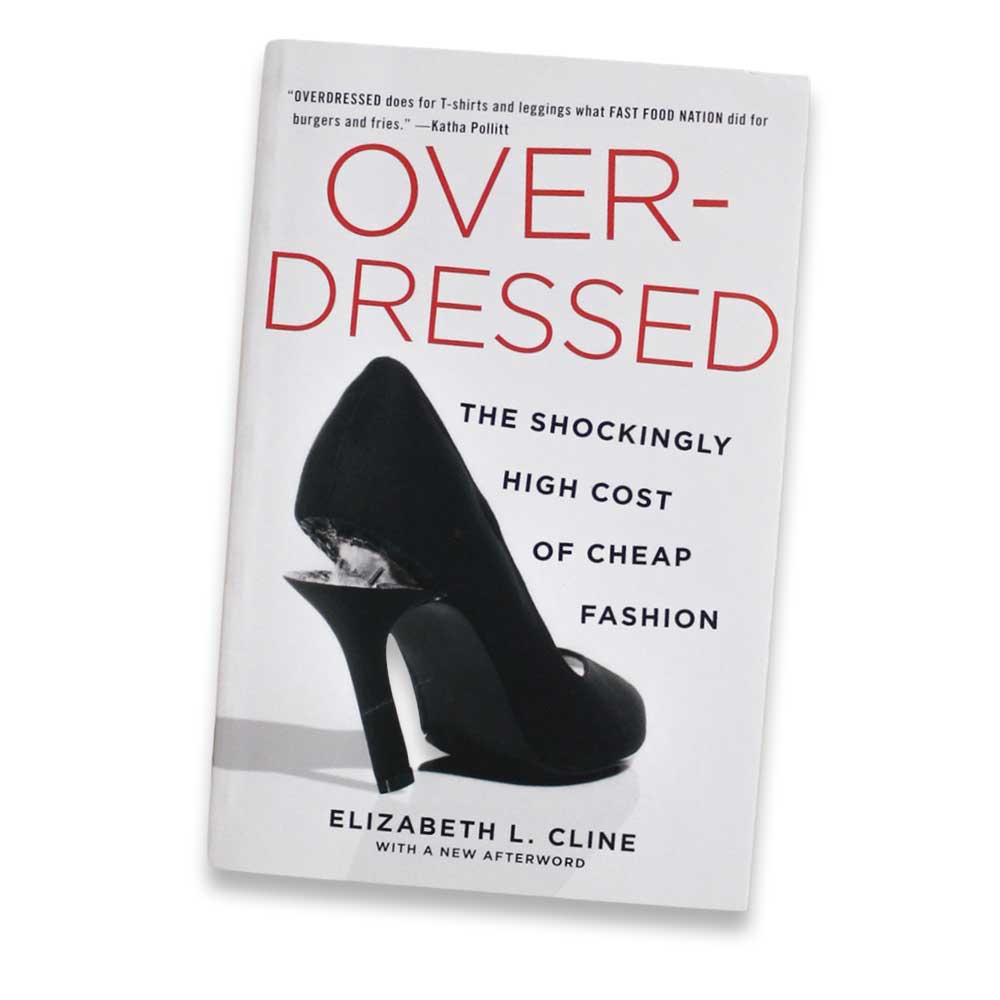
Slow Fashion is a recent term adopted to describe a way of manufacturing fashion, somehow at the opposite pole of ‘fast-fashion.’
Compared to industrial en-mass manufacturing, slow fashion is produced by expert artisans hence the use of ‘artisanal fashion’ to describe the same thing.
However, it is not just the use of finite materials and wasteful manufacturing practices that depletes the planet’s resources and creates pollution.
Fashion consumption and garment maintenance play equally important roles in achieving sustainable fashion – more about that below, in the ‘Conscious Fashion’ section.
5. Upcycled Fashion
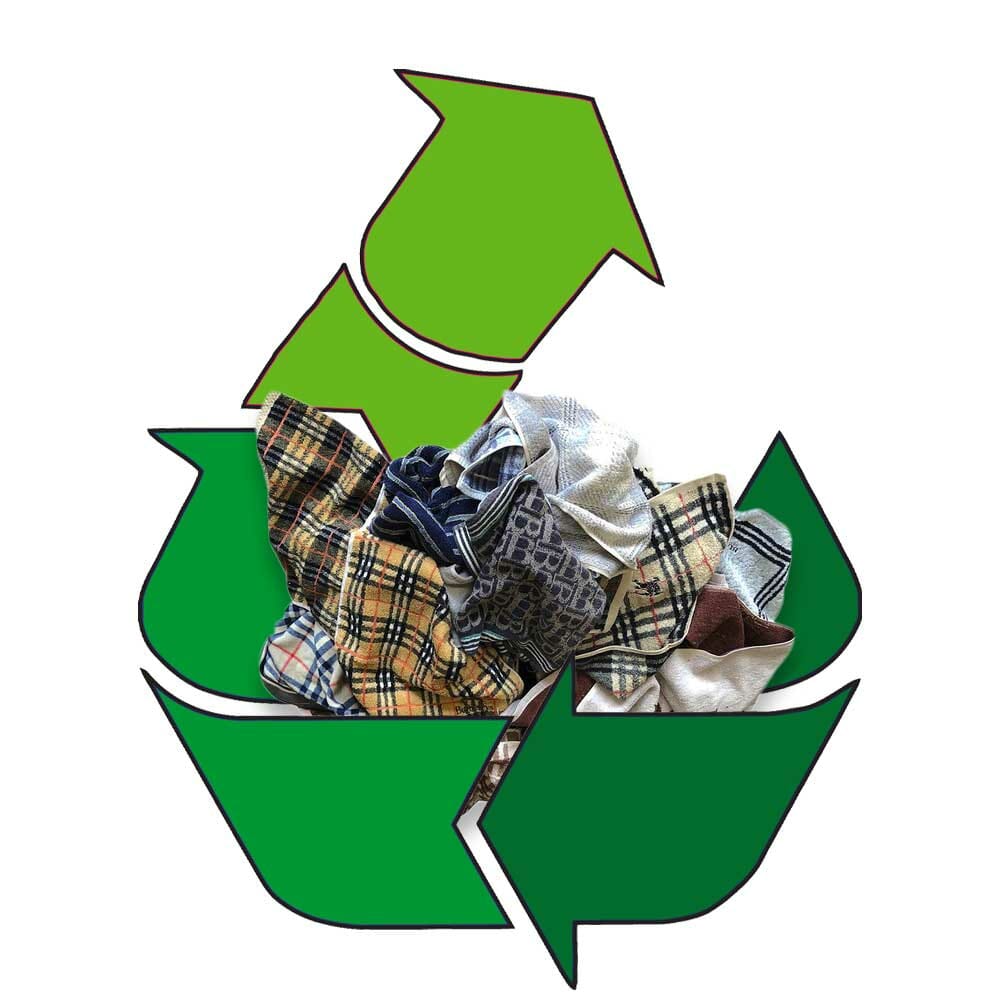
Upcycled Fashion is a term that describes reusing and repurposing textiles, materials, and garments to re-create fashion.
This facet of sustainable fashion upcycled is very popular amongst contemporary fashion designers and celebrities, to the point of being seeing a new form of high-end luxury fashion.
As old fabrics carry their own stories of usage, wear, and life, Upcycled Fashion is more than a new way of reviving old fabrics and turning them into new clothes.
The inclusion of upcycled materials in the making of new garments adds uniqueness to the final product.
As such, the creation of couture via Upcycled Fashion ensures that the final piece is always unique and, thus, rare.
However, when it comes to how relevant Upcycled Fashion is to achieving sustainability in fashion, the opinions are split.
The benefits of using upcycled materials are tremendous:
- Upcycled Fashion helps with waste reduction.
- Reuses materials that have no purpose and would otherwise end up in the landfill.
- Reduces carbon and toxic gas emissions resulting from manufacturing and transport.
On the other hand, upcycling has environmental issues that can’t be ignored:
- Upcycled garments release twice the number of microfibres that pollute oceans and the food chain, killing animals and people.
- Upcycling requires more energy and chemicals than what otherwise would have been used in the case of novel materials.
6. Thrifting, Swapping, Sharing, Renting Fashion
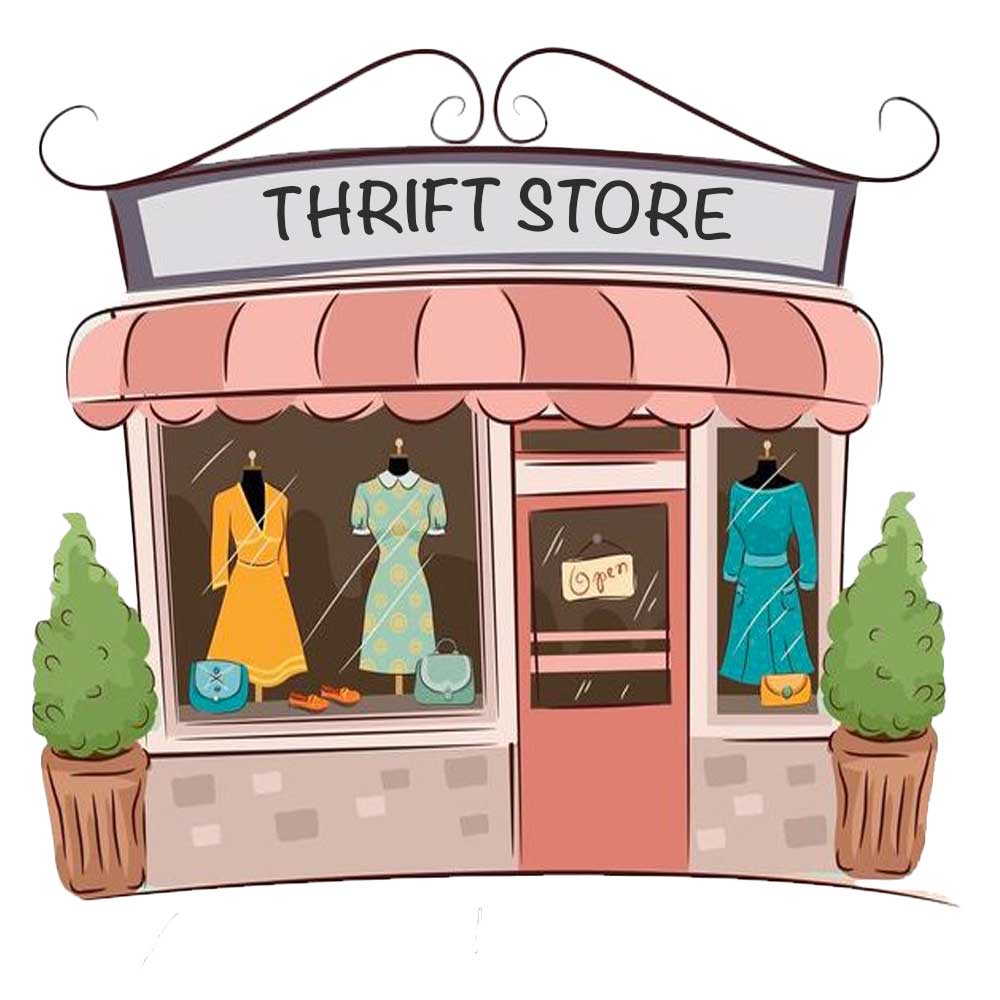
Secondhand clothing, swapping, sharing, clothes, thrifting, and renting fashion are great examples of sustainable fashion.
Available in thrift stores and second-hand shops, thrifting is a tremendous way to avoid the negative impact of fashion manufacturing.
The garments already exist, so there is no need to manufacture them again.
Moreover, there is no use of toxic chemicals, the release of greenhouse gases, or the use of a pesticide for a new collection.
However, there is a less discussed downside to renting, thrifting, swapping, and sharing all similar forms of second-hand and vintage fashion shopping.
Ilaria Urbinati – a celebrity fashion stylist that has Rami Malek, Dwayne Johnson, Armie Hammer, Bradley Cooper, and John Krasinski amongst her clients – explains:
“WITH one hand, you’re doing good for the planet. WITH the other hand, you’re doing harm to yourself.”
The problem stems from the difficulty of assessing the quality and the condition of the garment you’re going to procure this way.
Little by little, garments made of animal leather or plastic will start leaching toxic chemicals on your skin.
In time, these substances will affect your hormonal balance, showing on your skin, hair, nails, and so on.
7. Circular Fashion
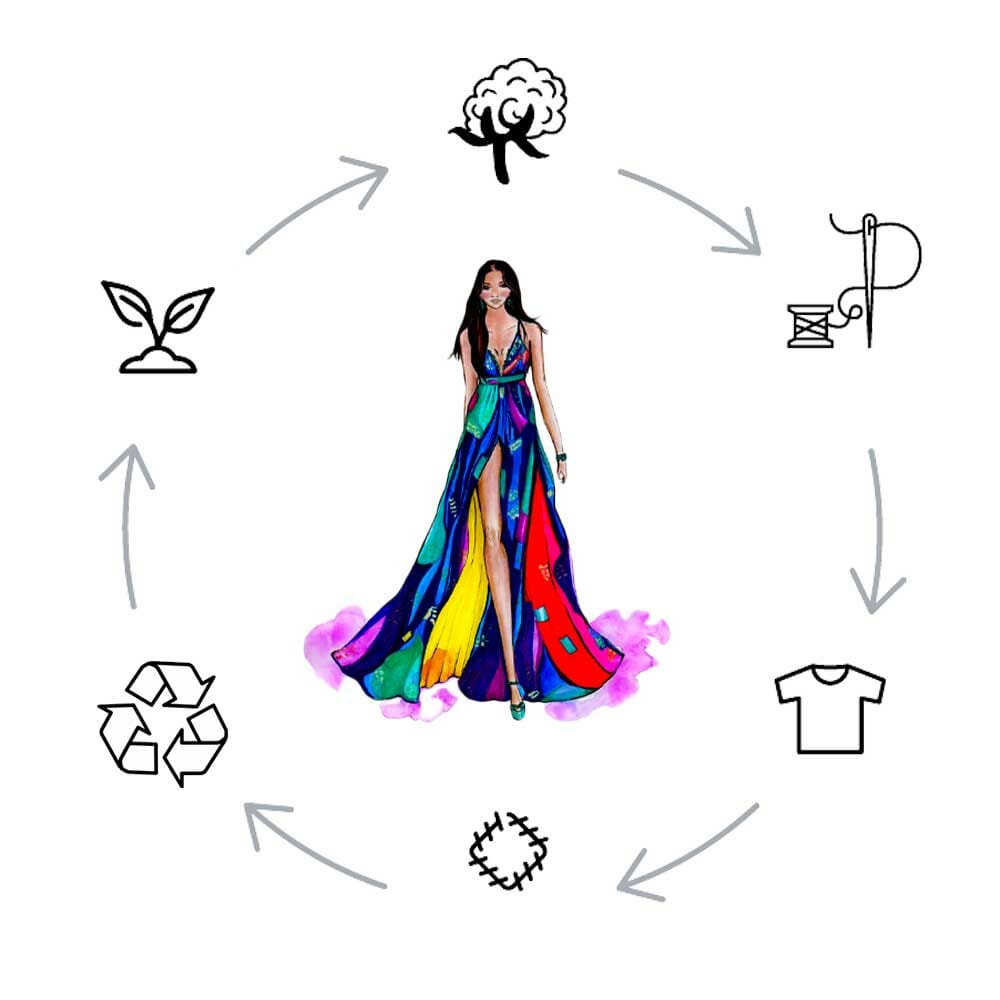
Circular Fashion is another great example of sustainable fashion.
The term describes ‘closed-loop’ systems, or manufacturing approaches aiming to recover discarded materials and waste and reintegrate them into production.
There are many types of circular fashion innovations.
But the most common form of a ‘closed-loop’ system in the fashion industry right now is recycling polyester and other plastic-based materials and putting them back into fashion production.
8. Conscious Fashion
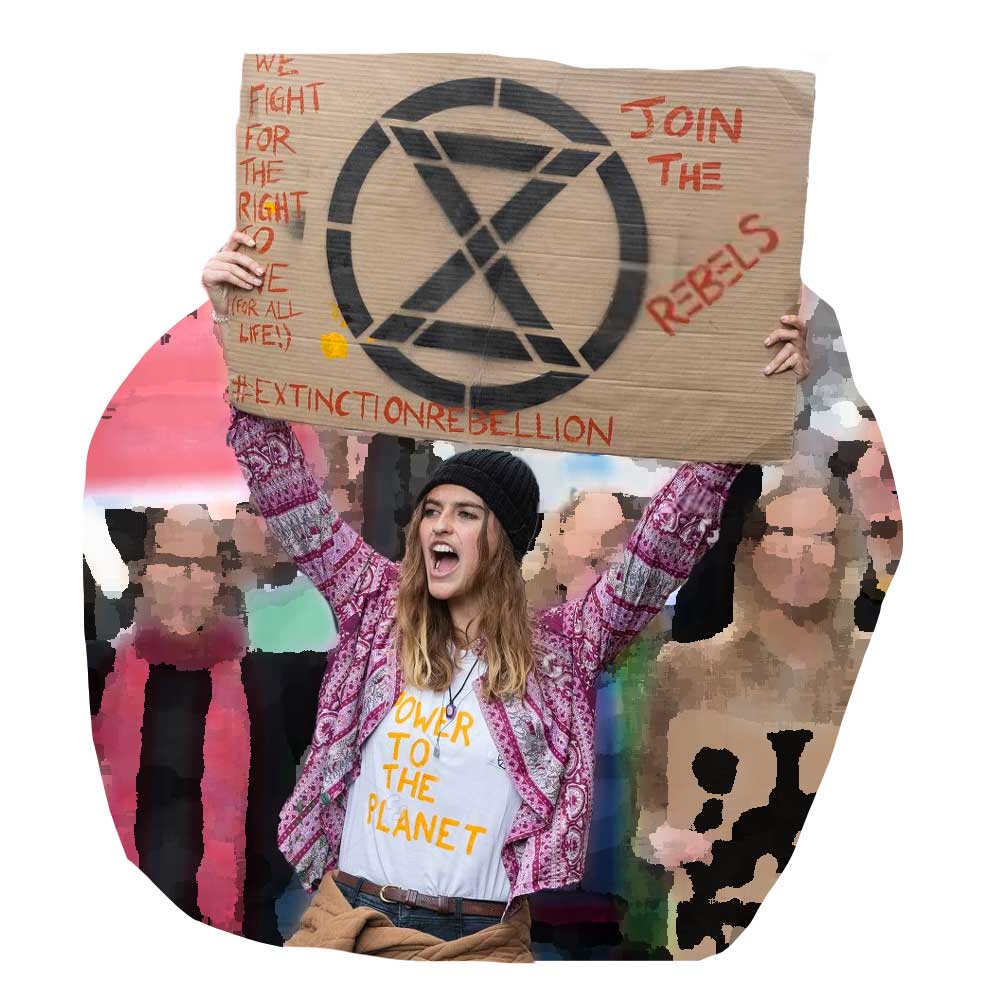
Conscious Fashion is the most popular example of sustainable fashion, seen as consumers’ way to fight the problems caused by Fast Fashion.
Above all, the environmental impact of fashion depends greatly on consumers’ choices, and for long they’re using their outfits.
Since the emergence of fast fashion, garments have been used half as much compared to 15 years ago.
This is caused in equal measure by the lower product quality and the insatiable desire to buy and showcase the latest trends.
Therefore, Conscious Fashion proponents aim to educate consumers on the value of choosing slow over fast or on how to care for their garments.
For example, the act of washing and drying a pair of jeans is 2/3 of the total energy consumed during the garment’s life.
In the case of underwear, the laundry process alone takes more than 80% of the total energy used.
The takeaway here is that washing garments, regardless of how sustainable they are, requires electricity, water, and detergent.
How To Achieve Sustainable Fashion
All sustainable fashion examples described above are interconnected and related.
All of them have a common goal of achieving a more sustainable fashion industry and a cleaner, safer world.
However, while these terms and categories intersect, there is a lot of conflict and confusion.
This complexity makes it difficult to achieve sustainability in fashion.
In this section, I will detail two main areas of consideration critical in achieving sustainable fashion:
1. What Makes A Fashion Brand Sustainable?
2. What is Greenwashing In Fashion?
Without further ado…
1. What Makes a Fashion Brand Sustainable?
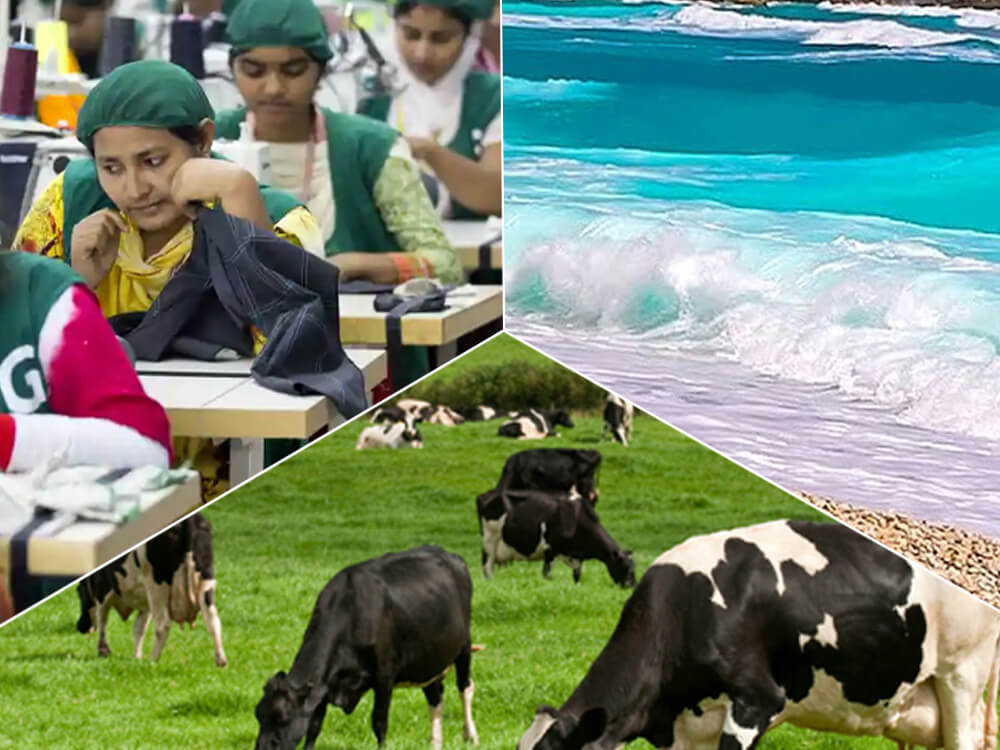
Imagine this: A clothing brand is considered “ethical” for ensuring proper working conditions and fair wages for garment workers.
However, if the same ethical label uses plastic and other synthetic materials, it falls into the non-eco-friendly category.
Moreover, the brand becomes unethical from an animal welfare angle if it uses animal leather.
So in order for a label to be considered sustainable, it is not sufficient to perform one of the mentioned activities.
It must abide by as many terms as possible to ensure environmental and social sustainability.
2. The Issue of Greenwashing

In very simple terms, greenwashing happens when companies claim they are doing good for the environment (or social justice) while they are not!
According to Wikipedia:
Greenwashing, also called “green sheen”, is a form of marketing spin in which marketing IS deceptively used to persuade the public that an organization’s products, aims and policies, are environmentally friendly.
Greenwashing in fashion often happens through deceptive certifications.
The purpose of certifications in fashion is to build trust between buyers and retailers.
However, for a company to ‘obtain’ one of these certifications, it is often sufficient to produce a single organic cotton t-shirt.
In reality, sustainable fashion certificates are granted to whoever pays for them.
It is a minefield where large corporations amass certificate after certificate.
At the same time, small family labels that cannot afford to pay for certifications are left out and made to look unethical or unsustainable.
There are a few things you can do to ensure the garment you buy is not ‘greenwashed’.
- Check the certificate issuer – is it an independent or a commercial enterprise?
- See where the materials in your product are coming from.
- See if the brand’s philosophy resonates with yours.
- What is the brand’s view on the future of fashion?
- Check if the brand is present on dedicated marketplaces for vintage clothing and sustainable fashion.
- Finally, ask the brand questions about the materials used and see how open and prompt they are.
- If you don’t get an answer, that’s a bad sign, no matter how many sustainable certificates they have.
Top 10 Sustainable Fashion Brands in 2023
Without further ado, these are the best ten sustainable fashion companies (and brands) you can trust and shop for in 2023.
1. PATAGONIA

Patagonia is recognized as one of the best sustainable clothing companies in the world right now.
The outdoor brand was one of the speediest defenders of environmental ethics in the activewear fashion industry.
Also, Patagonia was one of the first adopters of using recycled materials and switching to organic cotton.
While using sustainable materials when it can, the brand will help you repair your clothes and gear to make them last longer.
The company has Fair Trade Certified and Bluesign-approved collections with a supply chain closely monitored to ensure they are safe for the environment, workers, and consumers.
Patagonia also buys and resells its creations, so you can get credit for bringing in your old Patagonia clothing or buy something pre-owned for a lower cost.
2. EILEEN FISHER
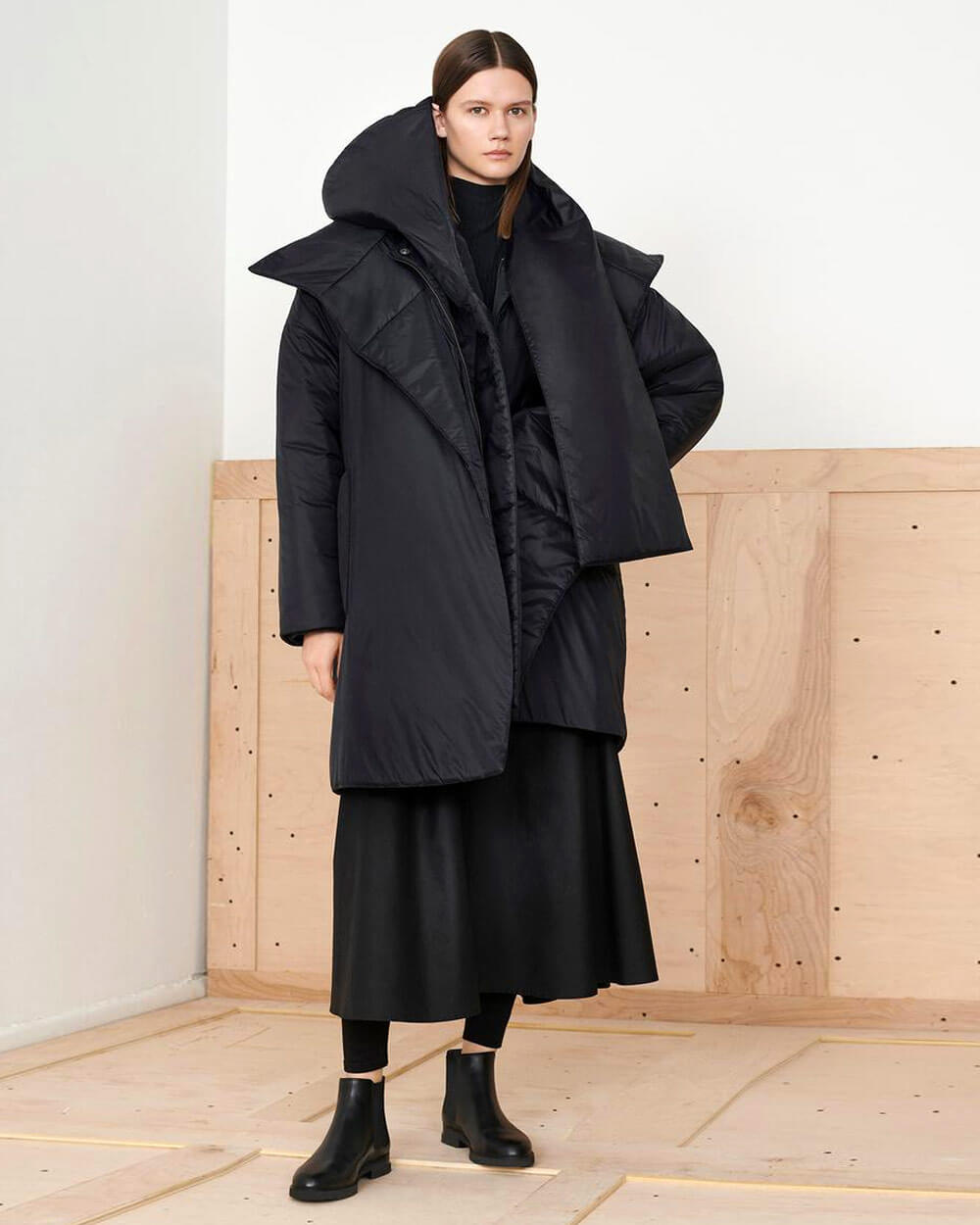
Eileen Fisher is an industry leader for all sustainable brands and ethical fashion labels.
The company believes social and environmental injustices are a reason to do business entirely differently.
For that, the label carefully oversees its supply chain to ensure fair working wages.
By 2025, the brand’s vision is to reduce greenhouse gas emissions created during garment production.
Equally, the company wants to reduce the CO2 created during shipping by 25 percent.
If you’re looking for sustainable clothing of inclusive sizes, this is the brand for you – the offering ranges from XXS through 3X and includes several petite selections.
3. STELLA MCCARTNEY

There is no sustainable clothing brand like Stella McCartney.
Delightful in her stylistic duality, Stella McCartney’s creations resemble titanic collisions of natural with artificial forces.
Imagine juxtaposed clashes of spirit and matter, light and dark, high and low, priceless and worthless.
And, since we talk about aesthetic clothing here, imagine combinations of wasteful and saving, or haute-couture vs fast fashion.
If you want a sustainable brand that’s globally recognized, then go for Stella McCartney.
One thing is for sure, Stella’s eponymous and timeless compositions will not disappoint you.
4. MARA HOFFMAN

Exuding a playful, bright and colorful aesthetic, Mara Hoffman’s label focuses on creating rich, textured, and understated pieces highlighting the feminine form’s power.
Inspired by personal reflections on mythology and travels, the designer injects whimsy and unexpected details into her sustainable collections.
Moreover, the brand’s pieces are crafted from sustainable and eco-friendly materials by close-knit expert artisans in New York City.
If you are looking for tribal patterns, abstract art, and punchy prints, Mara Hoffman’s extensive collection is a must.
Check out her dresses, color-blocked skirts, and high-waisted bikinis to create that style icon image every woman aspires to become.
5. PACT CLOTHING
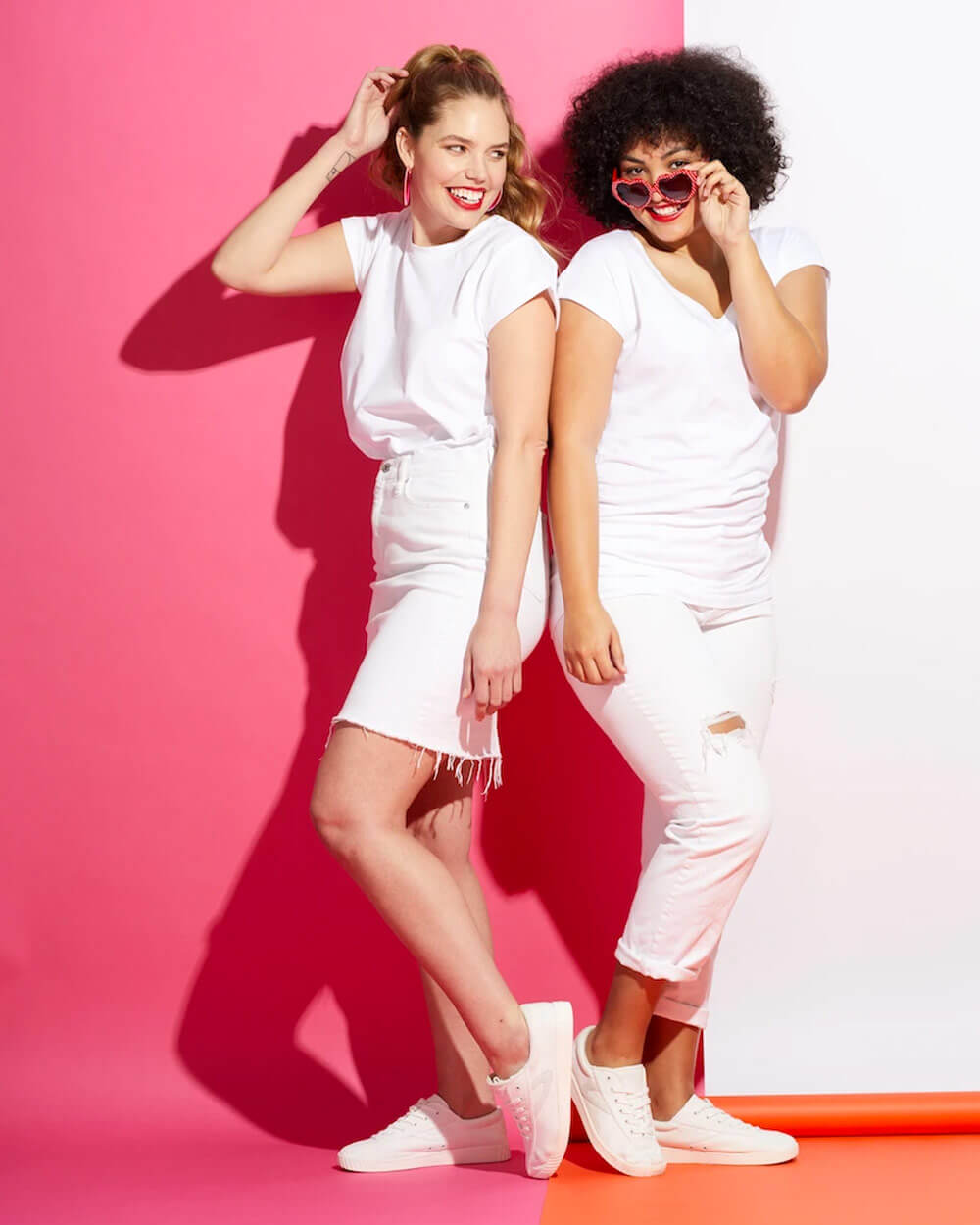
Pact is a clothing brand obsessed with making sustainable clothes that make the world a better place.
The Certified B Corp goes to great lengths to ensure the transparency of its entire supply chain.
From growing and harvesting organic cotton to the final sewing and all processes in between, Pact is as clean and responsible as possible.
The super-soft tees, dresses, and underwear are 100 percent cotton.
Moreover, the brand’s non-GMO cotton is excellent for you and the farmers growing it.
6. NANUSHKA
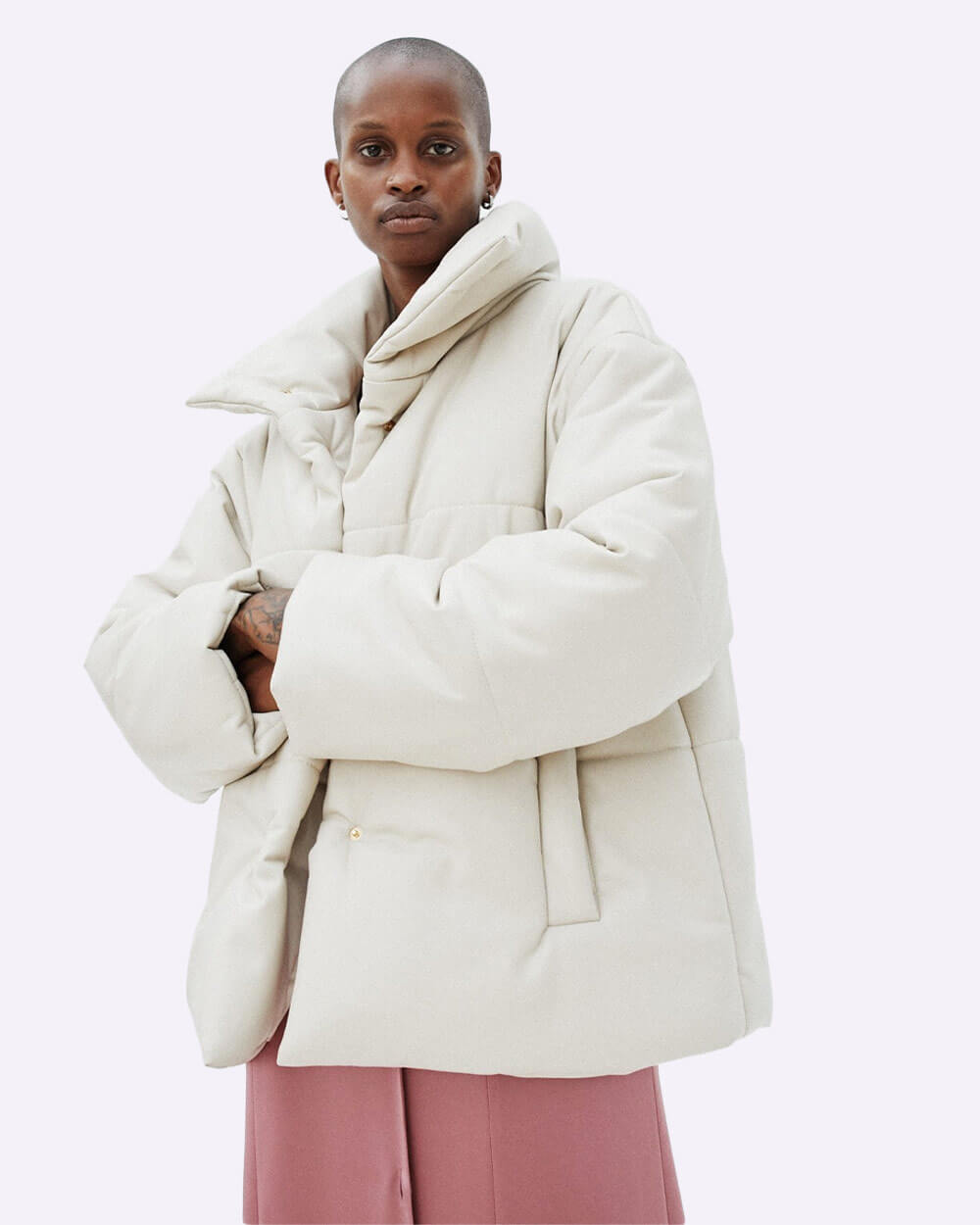
Designed in Budapest and produced in Europe, Nanushka is a splendid clash of Eastern with Western cultures.
The designer’s primary sources of inspiration are the many spiritual journeys that have morphed into Nanushka, a contemporary fashion house of informal, modern, and versatile forms.
Nanushka’s effervescent confidence, easiness of style, subtle femininity, and flair are tastefully matched with an equally important ethos of eco-conscious, ethical, and animal-friendly values for a cleaner industry and a safer tomorrow.
7. REFORMATION
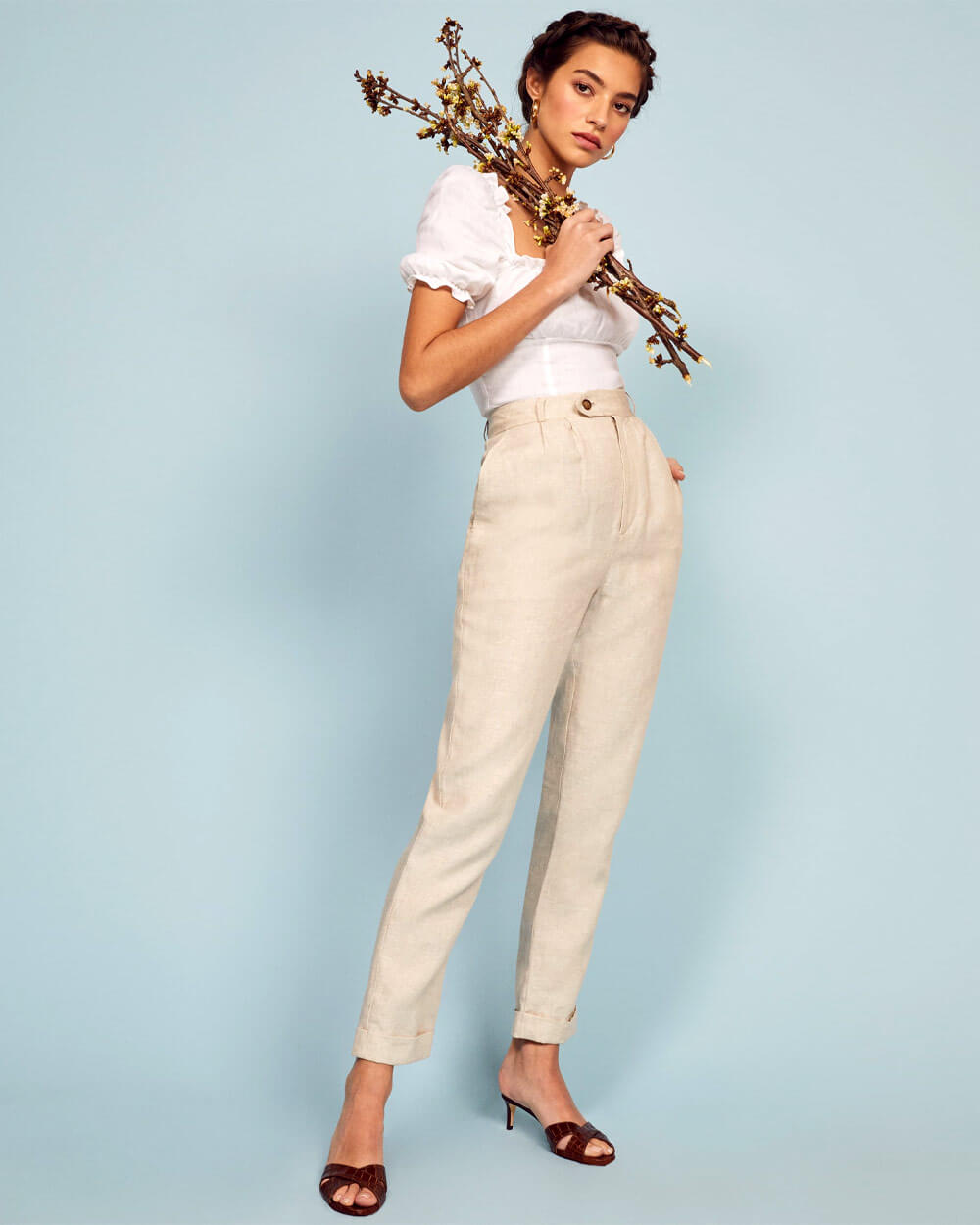
Reformation offers on-trend pieces that will still be stylish long after the season is over for the sustainable fashionista.
This Los Angeles-based brand creates products only from sustainable and upcycled materials in a fair-wage environment.
This bohemian clothing brand is also a great place for those who love cottagecore, dark academia, or light academia aesthetics.
Moreover, each Reformation garment comes with a description of its environmental footprint.
We particularly love that Reformation has added extended sizing, including petite clothing, to its permanent collection.
8. LEVI’S

A global leader in not just denim but in apparel at large, Levi’s is available in more than 100 countries worldwide.
Donned by cowboys, presidents, and customers from all over the world, Levi’s is known for being the face of denim.
The company uses nature-friendly and plant-based, and eco-friendly dyes on every pair of jeans, protecting the water supply and conserving water in the production process.
According to the founders, the team has always been at the forefront of change and progress:
“Touting eco-friendly and sustainable practices such as recyclable denim, ethically sourced cotton, and innovations to reduce water use, in addition to giving back to its workers and community organizations alike.”
9. THOUGHT CLOTHING
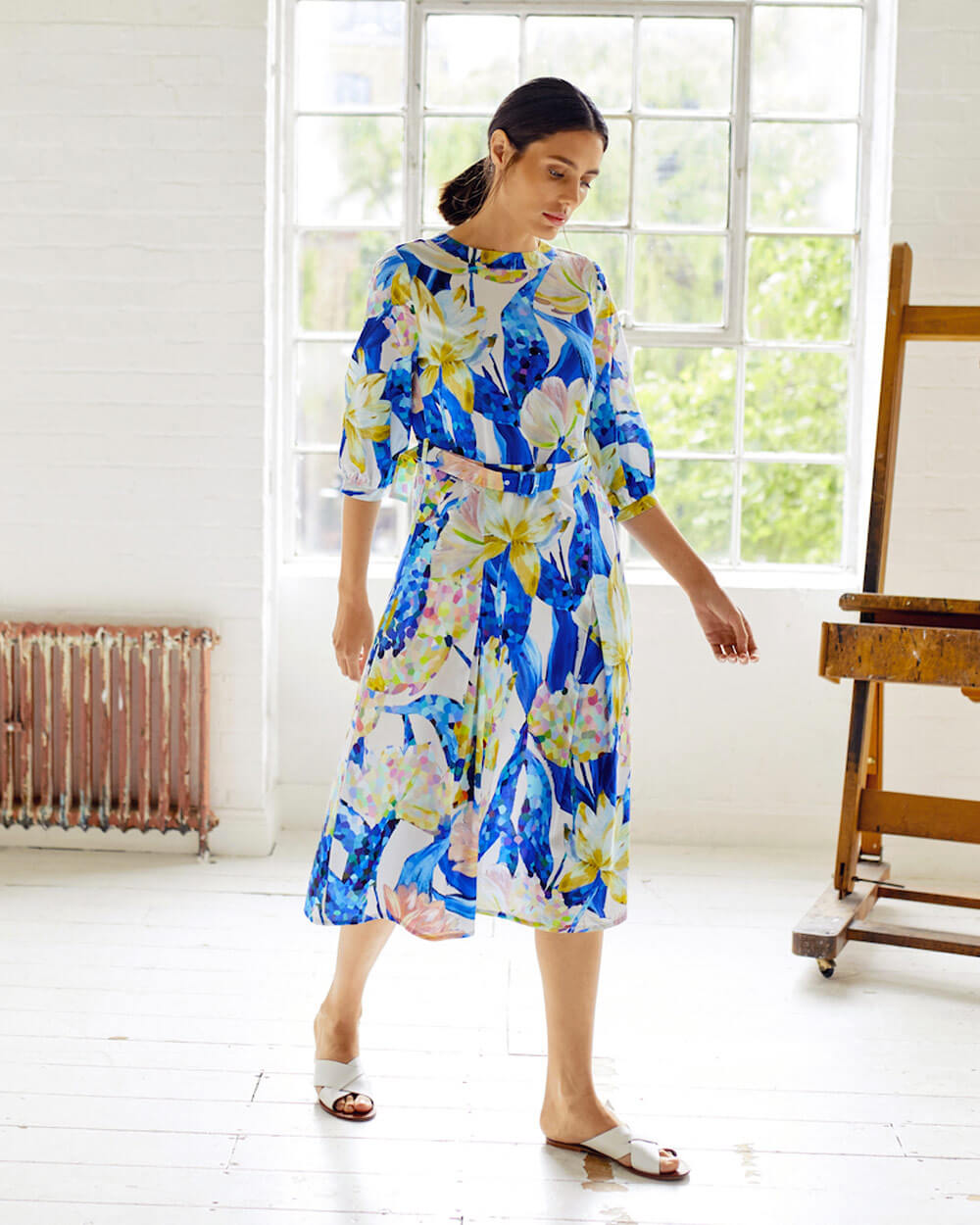
Thought clothing is an all-natural, sustainable clothing company with a simple philosophy: to design and make beautiful, timeless fashion while caring for people and the environment.
The brand has developed long-lasting relationships with ethical factories and suppliers to ensure that every worker is treated respectfully with fair wages and working conditions.
We love the commitment to using organic cotton and natural materials, helping us clean up our wardrobe one piece at a time.
10. PETITE STUDIO
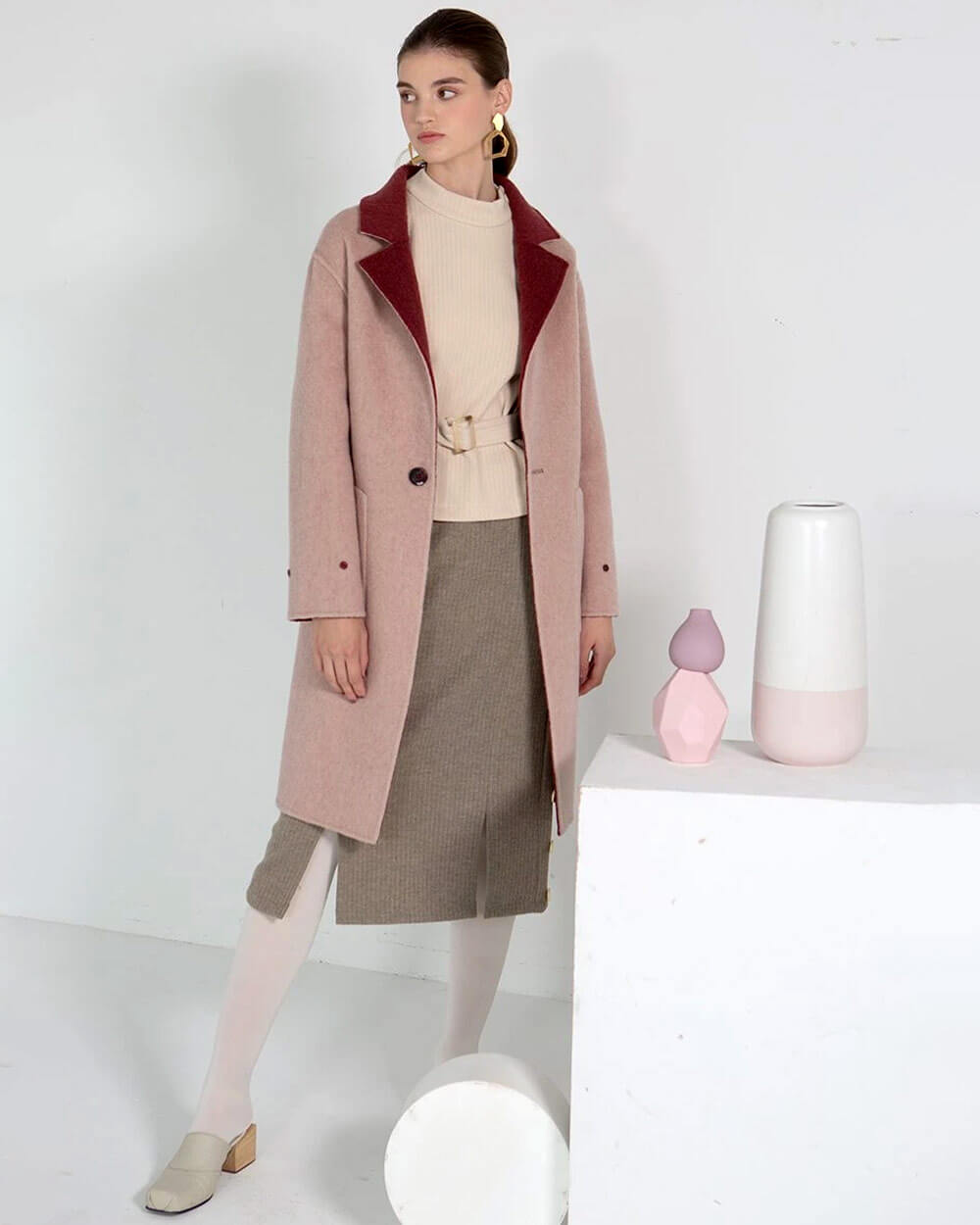
As the name suggests, Petite Studio is a sustainable clothing company specializing in petit clothing styles.
Most of the brand’s products are ‘slow fashion’, taking an average of 20 hours to produce a single garment.
That’s because the NYC-based brand is passionate about creating capsule wardrobe items and small-batch staples.
The petite-focused clothing collection is crafted in an ethical factory located in Jiangshan, China (the founder’s hometown).
Employees work 40 hours per week (with hour-long lunch breaks), receive health care and vacation time, and are even obligated to take a 30-minute nap break every shift.
For more, check out our full list of sustainable clothing brands.
What Can You Do For Sustainable Fashion?
Our main role in sustainable fashion is to be aware of the impact our fashion consumption has on the environment.
By now, you should be familiar with the most popular examples of sustainable fashion: ethical, slow, vegan, eco-friendly, fair trade, recycled, upcycled, and so on.
You also learned what are the best ten sustainable fashion companies right now, brands you can trust and support.
As you keep exploring and shopping, ensure the brands you’re buying from are minimizing their negative impact on the environment while improving the working conditions of their people.
Check if the label is really sustainable; just because they sell vegan handbags or vegan leather jackets, it does not mean it is also eco-friendly.
Increase the lifespan of your clothing and accessories by repairing, remaking, upcycling, and reusing your products.
Buy from sustainable clothing companies that respect biodiversity, the ecosystem, and the natural resources of this planet.
From brands that use carbon dioxide-free and renewable energy sources, such as wind, solar, and ocean, at every stage of the manufacturing and recycling processes.
The Verdict
With a carbon footprint accounting for over 10% of global greenhouse gas emissions, there’s no secret that the fashion industry is destroying the environment.
A change is much needed, from creating more awareness towards sustainable fashion practices to taking an active role in making a change.
Fortunately, positive changes in the fashion landscape are happening; more ethical brands, customers demanding sustainable clothing brands, and even a dedicated, ethical clothing search engine.
Glorious achievements, as changes do not come easy – not in the fashion industry.
Any change that deviates from the industry’s economic projections is rejected or at best, postponed.
The only viable solution is a slow shift from fast to sustainable fashion without impacting finances too much.
Weekly Newsletter
Keep up with the latest in fashion, beauty and style!
You have Successfully Subscribed!
Now it’s your turn…
Do you think policymakers should step in and enforce sustainable fashion practices as they did with automobiles’ toxic emissions?
Which of all the constituent parts of sustainable fashion is the most important to you and why?
Which one of these sustainable clothing brands/stores is your favorite and why?
Are there any other great ethical clothing brands you’ve tried and want to add to this list?
Please leave your comments below so others can benefit from your expertise and knowledge.
Ana Alves is a fashion and beauty writer with a keen interest in sustainability and veganism. Hailing from Sao Paulo, Brazil but living in London, UK, Ana has been writing about sustainable and vegan fashion for over 10 years. Actively curating for Saatchi, Ana’s engaging prices have been presented in Forbes, Wired, Vanity Fair, The London Economic, Digital Trends, and The VOU.



